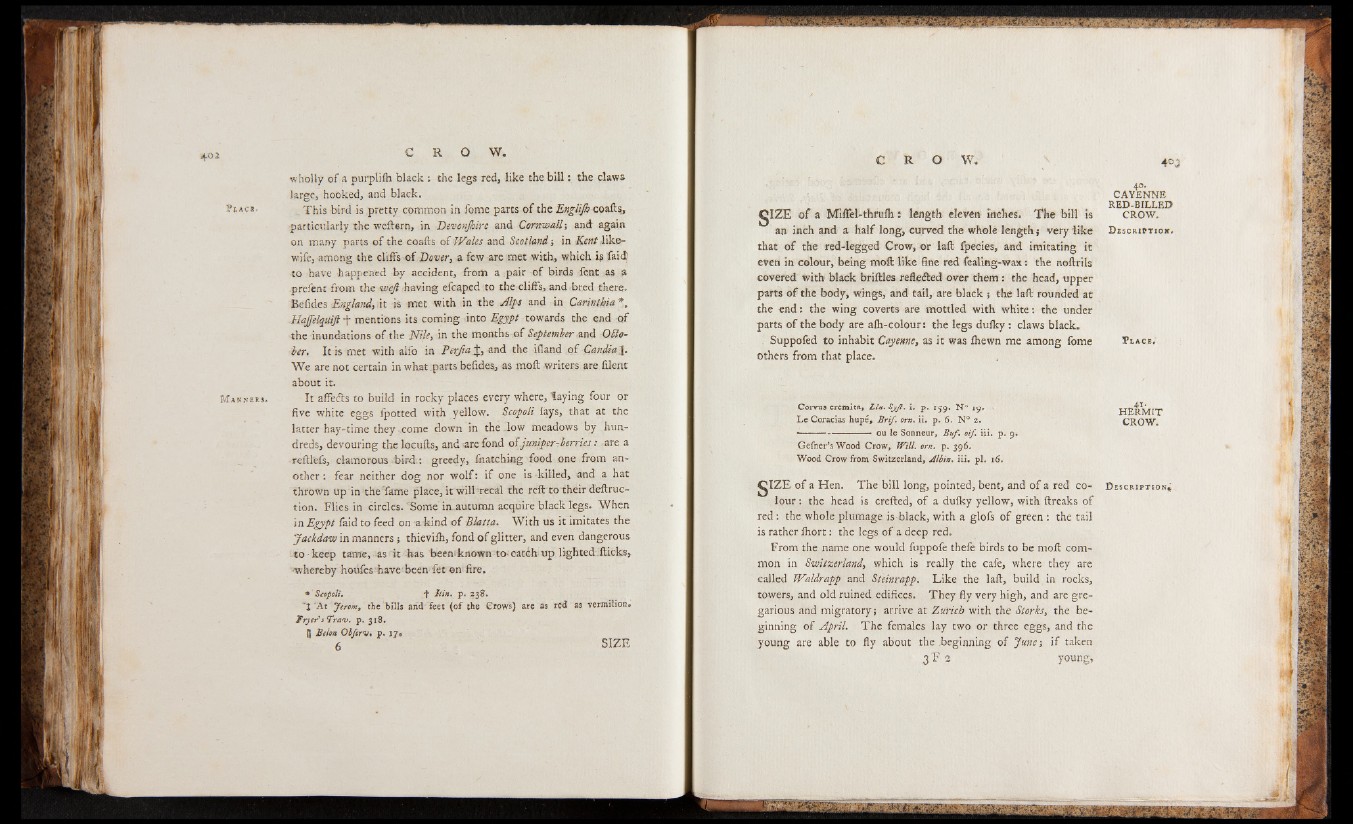
PEACE.
M anne r s .
wholly of a purplilh black : the legs red, like the b ill: the claws
large, hooked, and black.
This bird is pretty common in fome parts of the Englijh coafts,
particularly the weftern, in Devonjhire and Cornwall; and again
on many parts of the coafts of Wales and Scotland; in Kent dike-
wife, among the cliffs of Dover, a few are met with, which i$ feid
to have happened by accident, from a pair of birds fent as a
prefect from the weft having efcaped to the cliffs, and.bred there.
Befides England, it is met with in the Alps and in Carinthia *.
Hajfelquift + mentions its coming Into Egypt towards the end of
the inundations of the Nile, in the months of September and OHoler.
It is met with alfo in Ferjta\, and the ifland of Candta\.
We are not certain in what .parts befideiSj as moft writers are filent
about it.
It affe&s to build in rocky places every where, laying four or
five white eggs fpotted with yellow. Scopoli fays, that at the
latter hay-time they come down in the .low meadows by hundreds,
devouring the locufts, and are fond o(juniper-berries: are a
reftlefs, clamorous bird.: greedy, (hatching food one from another
: fear neither dog nor wolf: if one is .killed, and a hat
thrown up in-the fame place, it will'recal the reft to therr deftruc-
tion. Flies in circles. 'Some in.autumn acquire black legs. When
in Egypt laid to feed on -a kind of -Blatta. With us it imitates the
Jackdaw in manners; thievifh, fond o f glitter, and even dangerous
to keep tame, as it has beeniknown to-catch up lighted flicks,
whereby houfeshavebeenfet on fire.
• Scofoli. f hin. p. 23S.
"J At J ercm , tie bills and feet (of the Crows) are as red as vermilion.
Fryer’ s Tran. p. 318.
[J Be Ion Obferv, p. 17«
6 S IZ E
g I Z E of a Miffel-thrulh: length eleven inches. The bill is
an inch and a half long, curved the whole length; very like
that of the red-legged Crow, or laft fpecies, and imitating it
even in colour, being moft like fine red fealing-wax: the noftrils
covered with black briftles reflected over them : the head, upper
parts o f the body, wings, and tail, are black; the laft rounded at
the end: the wing coverts are mottled with white: the under
parts of the body are alh-colour: the legs dulky: claws black.
Suppofcd to inhabit Cayenne, as it was lhewn me among fome
others from that place.
40.
CAYENNE
RED-BILLED
CROW.
D e s c r i p t i o n
P l a c e #
Corvus eremita, Lin. Syjl. i. p. 159. N" 19. HÉRMIT
Le Coracias hupé, B rif orn. ii. p. 6. N° 2. CROW.
—-------- ou le Sonneur, Buf. oif. iii. p. 9.
Gefner’s Wood Crow, With orn. p. 396.
Wood Crow from Switzerland, Albin, iii. pi. 16,
SIZE of a Hen. The bill long, pointed, bent, and of a red co- D e s c r i p t io n ^
lour : the head is crefted, of a dufky yellow, with ftreaks of
red: the whole plumage is black, with a glofs of green : the tail
is rather fliort: the legs of a deep red.
From the name one would fuppofe theft; birds to be moft common
in Switzerland, which is really the cafe, where they are
called Waldrapp and Steinrapp. Like the laft, build in rocks,
towers, and old ruined edifices. They fly very high, and are gregarious
and migratory; arrive at Zurich with the Storks, the beginning
of April. The females lay two or three eggs, and the
young are able to fly about the beginning of June-, if taken
3 F 2 young,